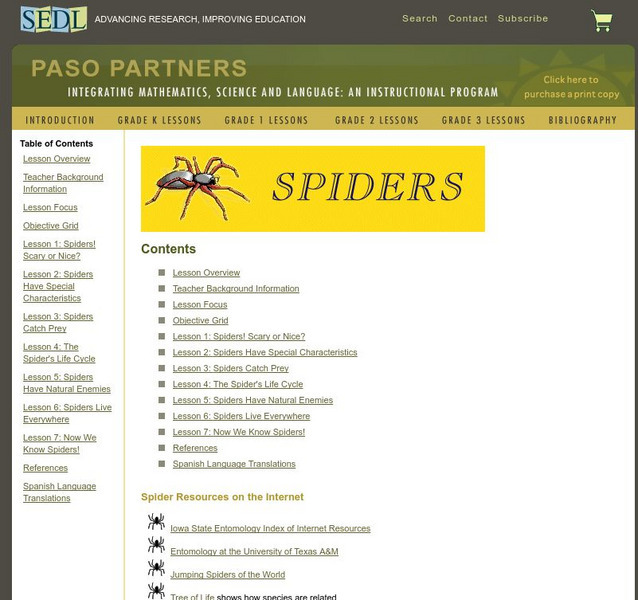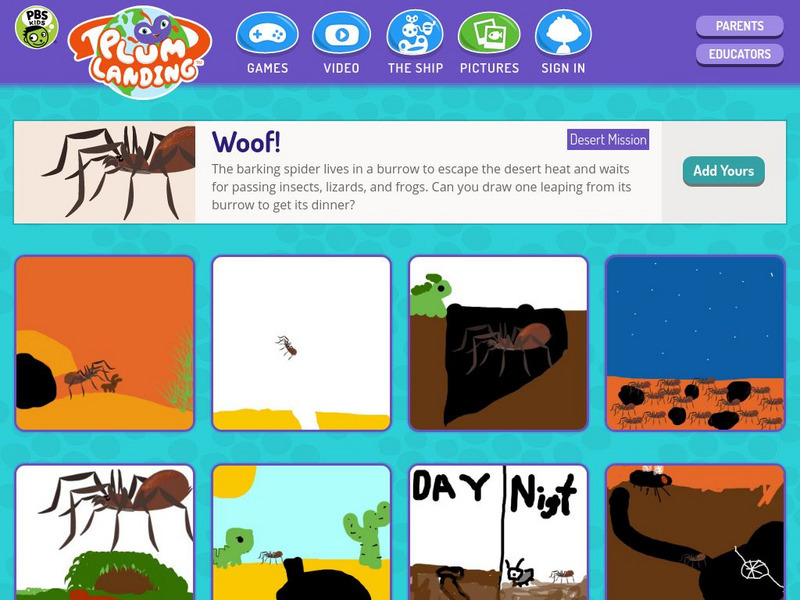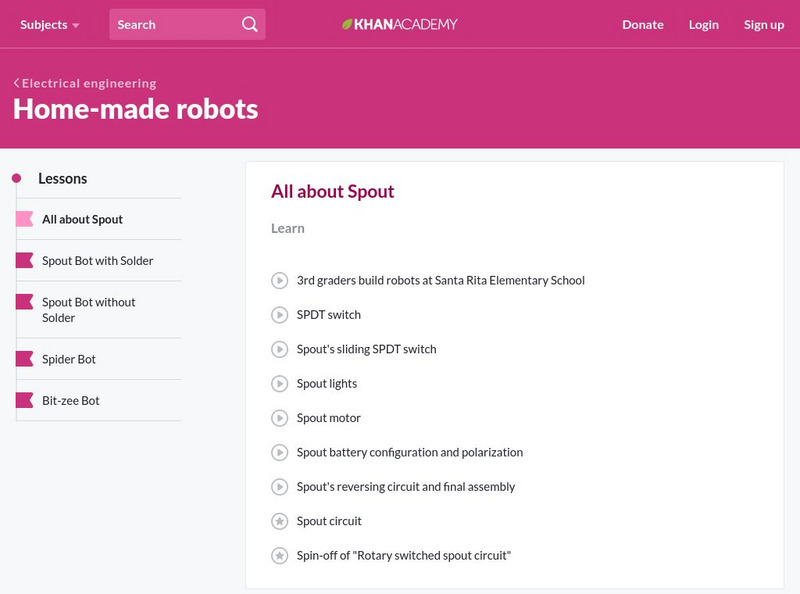University of Michigan
Bio Kids: Critter Catalog: Spiders
Spiders are easy to study as they are found everywhere. This page answers common questions about spiders, including classification information. It also has many excellent photographs of these critters and links to information on the most...
Other
Univ Calif Riverside: Medically Important Arachnids
A web site devoted to describing the numerous venomous arachnids that have a medical importance to humans, as well as a description of how these arachnids aid humans.
Museum of Science
Mo S: Image Gallery of the Scanning Electron Microscope
At this resource you'll find everything from a mosquito head to a fly foot, from a dentist's drill to toilet paper! These and just about everything in between as seen through a scanning electron microscope.
Burke Museum
Burke Museum: Weird Spider Stories
This section of the Burke Museum's collection on Arachnology goes through a series of "weird" stories associated with spiders. Each myth is accessible by clicking on the corresponding link.
University of Southern California
Structure of Matter: Animals
A slide show that demonstrates the development of physical structure in the animal world, moving from sponges through mammals.
University of California
Ucmp: Araneae Spiders
A site from UC Berkely on the araneae class, the true spiders.
Kidport
Kid Port: Arachnids Spiders, Ticks, and Scorpions
KidPort.com provides simple information on arachnids, a type of arthropod that includes spiders, ticks, and scorpions.
Society for Science and the Public
Science News for Students: Peacock Spider's Radiant Rump Comes From Teeny Tiny Structures
Male peacock spiders have highly colored hind ends that they shake to attract females. Scientists have now figured out the physics responsible for those hues.
SEDL
Sedl: Spiders
This is a wonderful resource for teachers who want to help children appreciate the place spiders have in the world and lessen their fear of spiders. Includes 7 sequenced lessons/units with detailed teacher notes, student activities,...
Other
The Anatomy of a Spider
A comprehensive site on the anatomy of a spider, complete with diagrams, pictures, and detailed descriptions.
Other
Crab Spiders: Family Thomisidae
This resource contains information on the Thomisidae family and offers plenty of pictures. Includes a section on the mating habits of the Genus Xysticus.
Other
Tarantula's Burrow: British Spiders What Is a Spider?
A list of characteristics that a creature must satisfy to be considered a spider, as well as a list with pictures and descriptions of spiders commonly found in the UK.
Other
Tarantula's Burrow: British Spiders What Is a Spider?
A list of characteristics that a creature must satisfy to be considered a spider, as well as a list with pictures and descriptions of spiders commonly found in the UK.
PBS
Pbs Kids: Plum Landing: Woof!
This PBS Kids activity is an extension of a Plum Landing episode featuring the barking spider. Students will learn basic information about the barking spider; students will also use online drawing tools to design a scene with a barking...
ReadWriteThink
Read Write Think: Did You Say Spiders?
Contains plans for six thirty-minute lessons that ask young scholars to make response journals and multimedia projects about spiders. In addition to objectives and standards, this instructional plan contains links to PDF handouts and...
National Health Museum
Access Excellence: Terrific Tarantulas
A detailed site about tarantulas, including topics suchs as molting, structure, urticating hairs, and how to handle them.
Smithsonian Institution
Smithsonian National Zoo: Zoogoer Magazine: Surprising Spiders
Mary-Russell Roberson's article, "Surprising Spiders," deals with a variety of topics related to spiders in general, spider species, and spider facts. The focus is on spider types and species including the Brown Recluse, the Portia, the...
Burke Museum
Burke Museum: Dangerous Spiders
This site from the Burke Museum which is part of the collection of Arachnology from the Museum centers on correcting certain myths about so-called dangerous spiders. Scroll down to see the dangerous spider myths.
Khan Academy
Khan Academy: Electrical Engineering: Home Made Robots
Use these tutorials to start some robotics projects with Spout, Spider, and Bit-zee bots.
Read Works
Read Works: Spiders
[Free Registration/Login Required] An information text spiders and how they can be helpful. A question sheet is available to help students build skills in reading comprehension.
Read Works
Read Works: Spiders and a Balanced Diet
[Free Registration/Login Required] Students read about how spiders choose to eat a balanced diet. A question sheet is available to help students build skills in drawing conclusions.
Read Works
Read Works: Spooky Spiders
[Free Registration/Login Required] An informational text about spiders and how helpful they can be. A question sheet is available to help students build skills in reading comprehension.
Soft Schools
Soft Schools: Spider Sense Quiz
Take this interactive, multiple-choice quiz over spiders, then review your score and any missed questions at the end.
Soft Schools
Soft Schools: Spiders All Over
Take this interactive, multiple-choice quiz over different types of spiders, then review your score and any missed questions at the end.




















